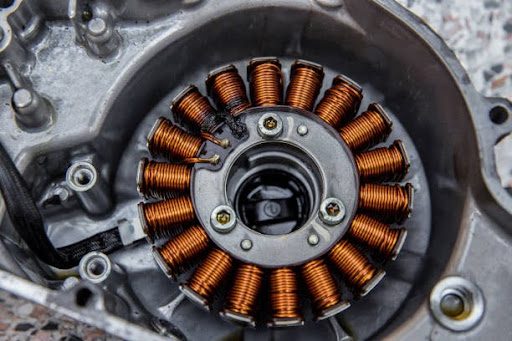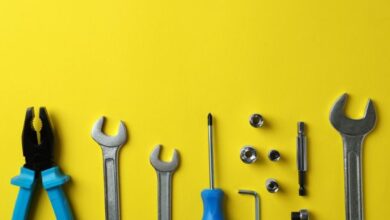How to Troubleshoot an Electric Motor Winding Machine | A Comprehensive Guide

Electric Motor winding machines are significant in assembling, especially in creating electric engines utilized in different applications like modern hardware, apparatuses, and car frameworks. These machines are answerable for winding loops and making complex examples of wire that structure the core of electric engines.
Importance of Electric Motor Winding Machine
Electric motor winding machine mechanize the most common way of winding curls, a sensitive and exact errand. By precisely winding curls, these machines guarantee the proficiency and execution of electric engines. With enough working winding machines, the quality and dependability of electric motors can be maintained, prompting improved execution and likely disappointments in finished results.
Electric motor winding machines require standard support to work at top proficiency like some other hardware. In addition, investigating is fundamental to distinguishing and amending any issues during an activity. Opportune investigation can forestall expensive margin time and creation delays, guaranteeing constant assembly process activity.
What are the components of an Electric Motor Winding Machine?
Electric motor winding machines comprise a few essential parts that cooperate to work with the winding system. Understanding these parts is fundamental for viable investigation.
Coils:
Loops are the fundamental structure blocks of electric engines, comprising wire twisted around a center. The winding machine is answerable for definitively winding these curls as indicated by the engine’s determinations.
Windings:
Windings allude to the plan of wire loops inside the engine. They decide the engine’s electrical qualities, like voltage, flow, and stage. The winding machine should precisely make these windings to guarantee legitimate engine activity.
Armature:
The armature is a pivoting part inside the engine that communicates with the attractive field to deliver movement. It comprises a center and windings ordinarily wound by an electric motor winding machine.
Commutator:
The commutator is an essential part of DC engines, liable for switching the bearing of the current stream in the armature windings. Legitimate twisting of the commutator sections is fundamental for smooth engine activity.
What are some common issues encountered with motor winding machines?

Like some modern hardware, Motor winding machine are vulnerable to different issues influencing their presentation and dependability. One typical problem is overheating, which can happen because of over-burden circuits, contact, or deficient cooling frameworks. Whenever left uncontrolled, overheating can prompt protection breakdown and loop harm. Another issue is shortcircuits, which can happen when conductive materials come into contact, bypassing the expected electrical pathway.
Short circuits might result from harmed protection, free associations, or unfamiliar articles obstructing the winding system. Furthermore, protection breakdown can happen when the defensive protection encompassing the wires falls apart, prompting electrical issues and likely engine disappointments. This crumbling can be brought about by age, openness to high temperatures, or mechanical harm. Lopsided winding is likewise a typical issue that can bring about imbalanced engine execution, prompting vibration, clamor, and diminished proficiency.
This issue might happen because of misalignment of winding parts, conflicting wire tensioning, or ill-advised winding procedures. By recognizing these regular issues and understanding their underlying drivers, administrators can successfully investigate engine-twisting machines to guarantee smooth activity.
Step-by-Step Troubleshooting Process
Investigating electric motor winding machines requires an orderly way to recognize and determine issues successfully. Follow these moves toward investigating your hardware:
Visual Inspection:
Start by outwardly examining the machine for any apparent indications of harm, like consumed parts, free associations, or garbage gathering. Check for overheating pointers like discoloration or dissolved protection.
Continuity Testing:
Utilize a multimeter to perform congruity tests on essential parts like loops, windings, and associations. This distinguishes any breaks or short circuits in the electrical pathways.
Insulation Resistance Testing:
Lead protection opposition tests to survey the state of the protection encompassing the wires. This includes estimating the obstruction between the guides and the engine packaging to identify any protection breakdown.
Voltage and Current Measurements:
Measure the voltage and current levels during activity to guarantee they are inside the predetermined reach. Unusual readings might demonstrate issues like over-burdened circuits or failing parts.
Commutator Inspection:
If appropriate, review the commutator for indications of wear, lopsided wear examples, or harm to the portions. Clean the commutator and brushes is essential to keep in touch.
Bearing and Shaft Inspection:
Check the bearings and shaft for excessive wear, misalignment, or lubrication issues. Replace worn bearings and ensure proper alignment to prevent motor inefficiency and premature failure.
Tension and Alignment Checks:
Verify that the wire tension is uniform throughout the winding process and that all components are correctly aligned. Uneven tension or misalignment can lead to uneven winding and motor imbalance.
Software and Control System Analysis:
If the machine has programming or a control framework, examine any blunder codes or symptomatic data given. Investigate programming-related issues and recalibrate them as needed.
Environmental Factors Assessment:
Consider ecological factors like temperature, mugginess, and residue levels that might influence machine execution. Implement appropriate measures to mitigate these factors and ensure optimal operating conditions.
Documentation and Record-Keeping:
Report all discoveries, test results, and moves made during the investigating system. Keeping up with thorough records works with future support and investigating endeavors.
Following this bit-by-bit investigation process, administrators can efficiently recognize and resolve issues with electric motor winding machines, limiting free time and augmenting efficiency.
Safety Precautions During Troubleshooting and Repair
While investigating and fixing electric motor winding machines, focusing on security is vital to forestall mishaps and wounds. The principal significant step is separating the power supply. It needs to be stimulated to guarantee the machine. Furthermore, wearing suitable individual defensive gear (PPE, for example, security glasses and gloves is fundamental for safeguarding against possible dangers.
Following lockout/tagout systems further shields against incidental initiation of the machine during upkeep. Establishing the hardware appropriately mitigates electrical dangers while keeping away from lone work guarantees that help is accessible if necessary. Complying rigorously with the producer’s security rules and assessing instruments for any harm before use are extra measures to limit gambles. Keeping up with the center and staying away from interruptions during investigating and fixing errands is significant for well-being.
Working in very much-ventilated regions forestalls openness to destructive substances, and having a crisis reaction plan set up guarantees quick activity in the event of mishaps. By following these security insurances tenaciously, the gamble of mishaps while dealing with electric motor winding machines is essentially diminished, guaranteeing a protected workplace for all included.
Conclusion
Successfully investigating electric motor winding machines is fundamental for keeping up with ideal execution and limiting personal time in assembling tasks. Administrators can recognize and determine issues proficiently by understanding the parts of these machines, following a deliberate investigation process, and focusing on security. Reporting investigating exercises, upkeep records, and well-being techniques guarantees meaningful experiences for future reference and consistent improvement.
With appropriate upkeep and adherence to safe and secure conventions, electric motor winding machines can work dependably, adding to the smooth working of different modern cycles. Keep in mind proactive upkeep and exhaustive documentation are critical to guaranteeing the drawn-out progress and effectiveness of electric engine twisting machines in assembling conditions.





